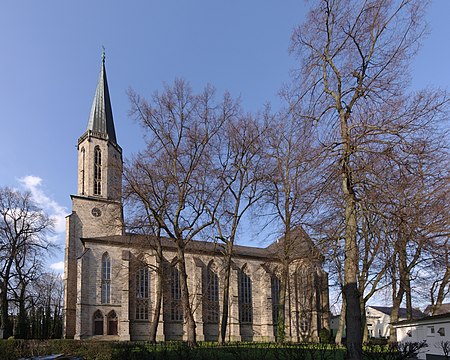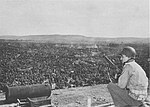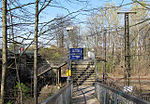Große Kirche Aplerbeck
Churches completed in 1869Gothic Revival church buildings in GermanyProtestant churches in Dortmund

The Große Kirche Aplerbeck is a Protestant church in Aplerbeck, now part of Dortmund, Germany. It was built from 1867 to 1869 in Gothic Revival style, designed by Christian Heyden. A listed monument, it is used by the parish St. Georg, serving mostly as a concert church.
Excerpt from the Wikipedia article Große Kirche Aplerbeck (License: CC BY-SA 3.0, Authors, Images).Große Kirche Aplerbeck
Märtmannstraße, Dortmund Aplerbeck (Aplerbeck)
Geographical coordinates (GPS) Address Website External links Nearby Places Show on map
Geographical coordinates (GPS)
| Latitude | Longitude |
|---|---|
| N 51.4955 ° | E 7.5584 ° |
Address
Große Kirche
Märtmannstraße 13
44287 Dortmund, Aplerbeck (Aplerbeck)
North Rhine-Westphalia, Germany
Open on Google Maps









